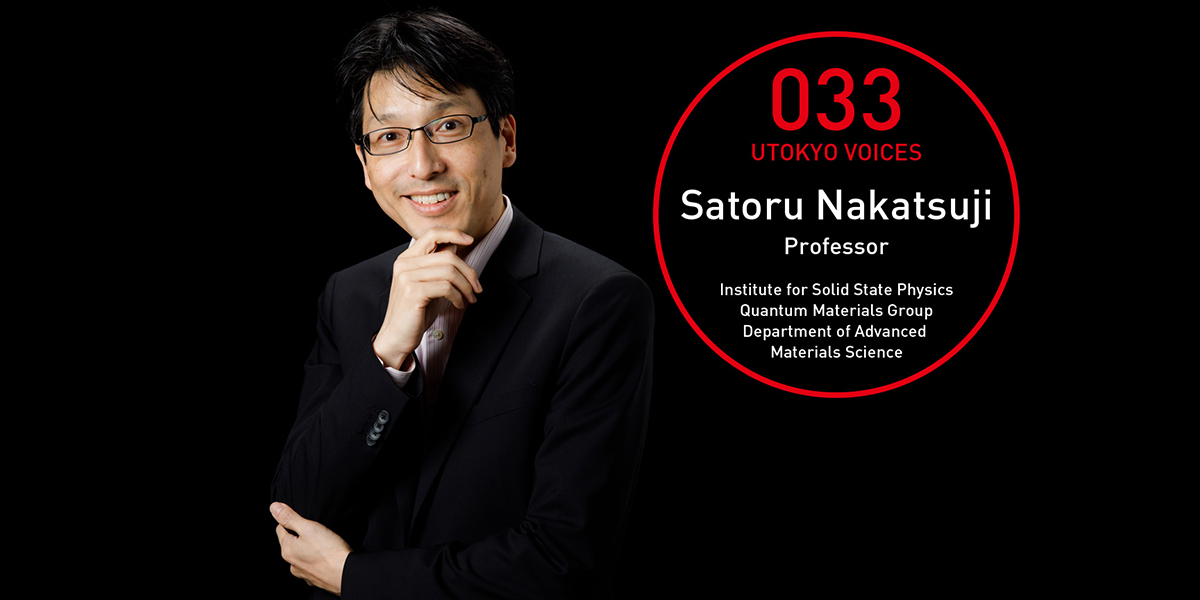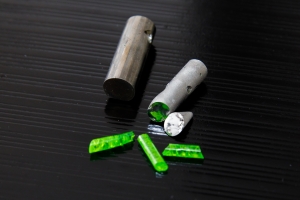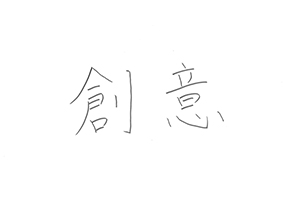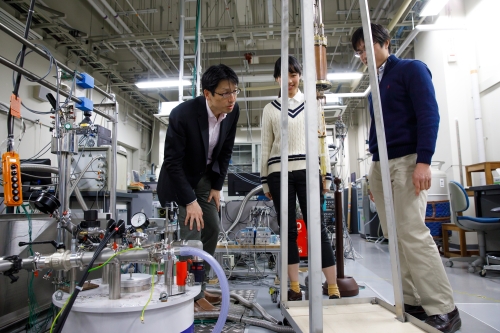Worlds Born of Solid-state Electrons | UTOKYO VOICES 033


Worlds Born of Solid-state Electrons
“Making the inconceivable conceivable, perhaps.”
This is what Professor Nakatsuji responded when asked to sum up his approach to research in a few words. As a researcher, he is sharp and energetic, and is becoming increasingly well known for his development of materials that show new quantum phenomena (the various behaviors of atoms, electrons, and the like). Electronics, like those in computers, for instance, utilize the magnetic and electrical properties of inorganic materials like metals and ceramics. Phenomena that occur in materials such as magnetism and superconductivity—where electrical resistance drops to zero once a sufficiently low temperature has been achieved—come from the quantum properties of electrons in solids, but so far only a very few of those phenomena have been explained.
Guided by the laws of physics, Nakatsuji discovers quantum phenomena that defy common sense and verifies them by experiment. One result of this is the measurement of the “large anomalous Hall effect.” The anomalous Hall effect is a phenomenon where, in the absence of a magnetic field, voltage flows transversely to a longitudinally flowing current, and can be used to efficiently operate magnetic memory. From the late 19th century, when the anomalous Hall effect was discovered, to the present day, it could be measured only in ferromagnets, i.e., materials that stick to magnets. However, Nakatsuji discovered a stronger large anomalous Hall effect at ambient or even higher temperatures in antiferromagnets, which do not manifest magnetic properties externally, as the magnetic fields cancel each other out inside the material. Antiferromagnets are resistant to magnetic interference and work a great deal faster than ferromagnets. This amazing discovery opens the way to much more advanced types of magnetic memory.
“Discovering new materials and quantum phenomena that no one in the world has ever seen is like creating new concepts from zero. For that, both creativity and originality are vital.”
Nakatsuji was born and raised in the outskirts of Kyoto. He was the type of child who would walk along the nearby river and through the rice paddies almost every day, catching fish and insects. But he was also good at building plastic model kits and electrical circuits. Always interested in the natural sciences, he was captivated by his high school physics teacher’s classes.
“All laws of physics are rational and can explain all sorts of things. Laws are laws, results are results, and the way he explained them so clearly, so that anyone could understand them, is what I found so fascinating.”
His passion ignited, Nakatsuji joined the Department of Metal Science in the Faculty of Engineering at university, as he wanted to be involved with research and development in the field of semiconductors, which were close to becoming products that would help society. However, the more he studied metals, the more interested he became in learning more about the physics that had fascinated him in high school, so in graduate school he changed course, taking physics.
“It was a roundabout route, but in the end I was able to develop perspectives and techniques that I wouldn’t have been aware of if I’d done only physics from the start.”
The new materials Nakatsuji has developed and the new quantum phenomena he has discovered do not necessarily lead immediately to any industrial applications. But they will form the foundations for dramatic advances in technology, perhaps even leading to the creation of futuristic technologies that today we can only glimpse in movies or novels.
“There’s still so much we don’t know about the world of solid-state electrons. It’s a treasure trove of discovery beyond what we can imagine. These discoveries are definitely going to be of use in the future,” Nakatsuji states.
“Our role is to look at things before people notice them, to make ‘zero’ into ‘one.’ And in the process of developing things further, we work with people from all over the world, with different perspectives and techniques. Instead of monopolizing knowledge, we share the joy of creation, and we compete to improve while working together. That’s the research style I value.”


These are some of the new materials developed by Nakatsuji. The antiferromagnetic manganese compound (left rear of photo) that shows a large anomalous Hall effect may be useful for a high storage density and low power consumption magnetic memory. The material in the foreground enables a new magnetism, a quantum spin liquid.


[Text: Soui (“Creativity”)]
Nakatsuji couldn’t decide between “originality” and “creativity,” but went with the latter. “An individual’s originality is important, but creativity is a vital part of joint research, so I think ‘creativity’ fits the bill here. Of course effort and tenacity are also very important.”

Satoru Nakatsuji
Graduated in 1996 from the Department of Metal Science, Faculty of Engineering, Kyoto University. Awarded the degree of Doctor of Science in 2001 from the Division of Physics, Graduate School of Science, Kyoto University, then spent two years as a Postdoctoral Research Fellow of the Japan Society for the Promotion of Science in the National High Magnetic Field Laboratory, Tallahassee, Florida. After being appointed as lecturer in the Division of Physics and Astronomy, Graduate School of Science, Kyoto University, he became Associate Professor at the Institute for Solid State Physics, the University of Tokyo, then was promoted to full Professor in 2016. In 2014, he was one of the recipients of the 11th Japan Academy Medal.
Interview date: February 19, 2018
Interview/text: Akiko Yoshikawa. Photos: Takuma Imamura.






